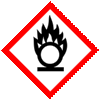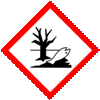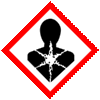| Anmol Chemicals is the pioneer manufacturers of Sodium nitrate & Sodium nitrite, Pharmaceutical Excipients Fragrance Food & Flavor chemicals in India. We offer Halal and Kosher Sodium nitrate & Sodium nitrite made in an ISO9001, ISO22000 (FSSC22000) cGMP and GLP certified facility. Our group has several manufacturing facilities spread across the world, supported by toll manufacturers and representatives in UAE, Europe, USA, China and has several associated manufacturing facilities spread across India. All the Information on Physics, Chemistry, Applications, Uses and Technology on Manufacture of Sodium nitrate & Sodium nitrite is in these pages. |
| The units have one or more of the certifications like FDA GMP, ISO 9001, ISO 22000, HACCP, REACH, Kosher & Halal |
Sodium Nitrite SDS GHS, MSDS Sheet
Specifications of Sodium Nitrite
Sodium Nitrite SDS GHS, MSDS Sheet, Material Safety Data Sheet
1: Section 1: Chemical Product and Company Identification
Synonyms: Nitrous acid, sodium salt
CAS No.: 7632-00-0
EINECS EC Number: 231-555-9
Molecular Weight: 69.00
Chemical Formula: NaNO2
Recommended usage: Industrial Manufacturing.
Section 2: Hazards Identification
GHS, Globally Harmonized System Classification in accordance with 29 CFR 1910
Classification according to Regulation (EC) No 1272/2008
Oxidizing solids Category 3
Acute toxicity, oral Category 3
Skin corrosion/irritation Category 2
Serious eye damage/eye irritation Category 2B
Specific target organ toxicity, single exposure; Respiratory tract irritation Category 3
Hazardous to the aquatic environment, acute hazard Category 1
Labeling according Regulation (EC) No 1272/2008
| GHS Label Elements  Oxidizing Solid |
GHS Label Elements |
GHS Label Elements |
Signal Word: Danger
Hazard Statements:
H272: May intensify fire; oxidizer.
H301: Toxic if swallowed.
H315: Causes skin irritation.
H320: Causes eye irritation.
H335: May cause respiratory irritation.
H400: Very Toxic to aquatic life.
Precautionary Statements
P210: Keep away from heat/sparks/open flames/hot surfaces – No smoking.
P220: Keep/Store away from clothing/…/combustible materials.
P221: Take any precaution to avoid mixing with combustibles.
P260: Do not breathe dust/fume/gas/mist/vapors/spray.
P264 Wash thoroughly after handling.
P270 Do not eat, drink or smoke when using this product.
P273: Avoid release to the environment.
P280 Wear protective gloves/protective clothing/eye protection/face protection.
P330: Rinse mouth.
P301+P310: IF SWALLOWED: Immediately call a POISON CENTER or doctor/physician. P301+P330+P331 IF SWALLOWED: rinse mouth. Do NOT induce vomiting.
P302+P35: IF ON SKIN: Wash with soap and water.
P303+P361+P353 IF ON SKIN (or hair): Remove/Take off immediately all contaminated clothing. Rinse skin with water/shower.
P304+P340 IF INHALED: Remove victim to fresh air and keep at rest in a position comfortable for breathing.
P305+P351+P338: IF IN EYES: Rinse cautiously with water for several minutes. Remove contact lenses, if present and easy to do. Continue rinsing.
P310 Immediately call a POISON CENTER or doctor/physician.
P332+P313: If skin irritation occurs: Get medical advice/attention.
P337+P313 If eye irritation persists: Get medical advice/ attention.
P342+P311 If experiencing respiratory symptoms: Call a POISON CENTER or doctor/physician.
P370+P378: In case of fire: Use water or water-spray or foam for extinction.
P362: Take off contaminated clothing and wash before reuse.
P391: Collect spillage.
P405: Store locked up.
P501 Dispose of contents/container in accordance with local/regional/national/international regulations.
Classification according to EU Directives 67/548/EEC or 1999/45/EC:
O Oxidizing R 8
T Toxic R25
N Dangerous for the environment
Section 3: Composition and Information on Ingredients
Ingredient: Sodium Nitrite
CAS No.: 7632-00-0
EINECS EC Number: 231-555-9
Percent: 97 - 100%
Section 4: First Aid Measures
Eye Contact: Immediately flush eyes with plenty of water for at least 15 minutes, lifting lower and upper eyelids occasionally. Get medical attention immediately.
Skin Contact: In case of contact, immediately flush skin with plenty of water. Cover the irritated skin with an emollient. Remove contaminated clothing and shoes. Cold water may be used. Wash clothing before reuse. Thoroughly clean shoes before reuse. Get medical attention.
Inhalation: If inhaled, remove to fresh air. If not breathing, give artificial respiration. If breathing is difficult, give oxygen. Get medical attention immediately.
Ingestion: If swallowed, do not induce vomiting unless directed to do so by medical personnel. Never give anything by mouth to an unconscious person. Loosen tight clothing such as a collar, tie, belt or waistband. Get medical attention immediately.
Section 5: Fire and Explosion Data
Fire: Not combustible, but substance is a strong oxidizer and its heat of reaction with reducing agents or combustibles may cause ignition. Increases the flammability of any combustible material.
Explosion: Contact with oxidizable substances may cause extremely violent combustion. May explode when heated to 537C (1000F) or on severe impact or on contact with cyanides, ammonium salts, cellulose, lithium, potassium plus ammonia, and sodium thiosulfate.
Fire Extinguishing Media: Water or water spray in early stages of fire. Foam may also be used, but avoid the use of multi-purpose dry chemical fire extinguishers where contact with sodium nitrite may occur. Water streams may scatter molten material.
Special Information: Sodium and Nitrogen Oxides are formed on heating. In the event of a fire, wear full protective clothing and NIOSH-approved self-contained breathing apparatus with full face piece operated in the pressure demand or other positive pressure mode. Decomposition of sodium nitrite may leave a caustic residue.
Section 6: Accidental Release Measures
Small Spill: Use appropriate tools to put the spilled solid in a convenient waste disposal container.
Large Spill: Remove all sources of ignition. Ventilate area of leak or spill. Wear appropriate personal protective equipment.
Spills: Clean up spills in a manner that does not disperse dust into the air. Use non-sparking tools and equipment. Reduce airborne dust and prevent scattering by moistening with water. Pick up spill for recovery or disposal and place in a closed container.
Section 7: Handling and Storage
Precautions: Keep locked up.. Keep away from heat. Keep away from sources of ignition. Keep away from combustible material. Do not ingest. Do not breathe dust. In case of insufficient ventilation, wear suitable respiratory equipment. If ingested, seek medical advice immediately and show the container or the label. Avoid contact with skin and eyes. Keep away from incompatibles such as reducing agents, combustible materials, organic materials, metals, acids.
Storage: Oxidizer. Hygroscopic. Air sensitive. Keep Sodium nitrite container tightly closed. Keep container in a cool, well-ventilated area. Separate from acids, alkalis, reducing agents and combustibles. See NFPA 43A, Code for the Storage of Liquid and Solid Oxidizers. Do not store above 23C (73.4F).
Section 8: Exposure Controls/Personal Protection
Engineering Controls: Use process enclosures, local exhaust ventilation, or other engineering controls to keep airborne levels below recommended exposure limits. If user operations generate dust, fume or mist, use ventilation to keep exposure to airborne contaminants below the exposure limit.
Personal Protection: Safety glasses. Synthetic apron. Gloves (impervious).
Personal Protection in Case of a Large Spill: Splash goggles. Full suit. Boots. Gloves. Suggested protective clothing might not be sufficient; consult a specialist BEFORE handling this product.
Section 9: Physical and Chemical Properties
Physical state and appearance: Sodium nitrite is solid. (Powdered solid.)
Odor: Odorless.
Taste: Saline. (Slight.)
Molecular Weight: 69 g/mole
Color: White to slightly yellowish.
pH (1% soln/water): 9 [Basic.]
Boiling Point: 320C (608F)
Melting Point: 271C (519.8F)
Critical Temperature: Not available.
Specific Gravity: 2.2 (Water = 1)
Easily soluble in hot water.
Soluble in cold water.
Partially soluble in methanol.
Very slightly soluble in diethyl ether.
Section 10: Stability and Reactivity Data
Stability: It is stable.
Instability Temperature: Not available.
Conditions of Instability: Excess heat, dust generation, ignition sources, exposure to air, combustible materials, incompatible materials, exposure to moist air or water.
Incompatibility with various substances:
Highly reactive with combustible materials, organic materials.
Reactive with reducing agents, metals, acids.
Slightly reactive to reactive with moisture.
Special Remarks on Reactivity:
Hygroscopic.
Strong oxidizer.
Slowly oxidizes to nitrate in air.
Reacts vigorously with reducing materials.
It is a strong oxidizer and is incompatible with the following: acetanilide, metals as powders, ammonium salts, amino guanidine salts, anti pyrine, Butadiene, chlorates, hypophosphites, activated carbon, iodides, mercury salts, permanganate, phthalic acid, phthalic anhydride, sodium amide, sodium disulphite, cyanides (e.g. potassium cyanide, sodium cyanide), sodium thiocyanate, lithium, sulfites, tannic acid, urea, wood, vegetable astringent decoctions, infusions, or tinctures.
Special Remarks on Corrosivity: Not available.
Polymerization: Will not occur.
Section 11: Toxicological Information
Oral rat LD50: 180 mg/kg; inhalation rat LC50: 5500 ug/m3; irritation: eye rabbit: 500 mg/24H mild. Investigated as a tumorigen, mutagen, reproductive effector.
Carcinogenicity: IARC: 2A - Group 2A: Probably carcinogenic to humans (Sodium nitrite)
Section 12: Ecological Information
Toxicity to fish: flow-through test LC50 - Oncorhynchus mykiss (rainbow trout) - 0,94 - 1,92
mg/l - 96,0 h mortality NOEC - Oncorhynchus mykiss (rainbow trout) - 0,54 mg/l - 96,0 h
Toxicity to daphnia and other aquatic invertebrates: EC50 - Daphnia magna (Water flea) - 12,5 mg/l - 48 h
Toxicity to algae: NOEC - Desmodesmus subspicatus (green algae) - 100 mg/l - 72 h
BOD5 and COD: Not available.
Results of PBT and vPvB assessment: This substance/mixture contains no components considered to be either persistent, bioaccumulative and toxic (PBT), or very persistent and very bioaccumulative (vPvB) at levels of 0.1% or higher.
Section 13: Disposal Considerations
Waste Disposal: Waste must be disposed of in accordance with all regulations.
Section 14: Transport Information
DOT (USA) & ADR/RID
CLASS 5.1: Oxidizing material.
CLASS 6.1: Poisonous material.
Identification: : Sodium nitrite UNNA: 1500 PG: III
Special Provisions for Transport: Marine Pollutant -Yes
IATA
CLASS 5.1: Oxidizing material.
CLASS 6.1: Poisonous material.
Identification: : Sodium nitrite UNNA: 1500 PG: III
Special Provisions for Transport: Marine Pollutant - No.
Section 15: Other Regulatory Information
USA Federal and State Regulations:
New York release reporting list: Sodium nitrite
Pennsylvania RTK: Sodium nitrite
Massachusetts RTK: Sodium nitrite
New Jersey: Sodium nitrite
California Director's List of Hazardous Substances: Sodium nitrite
TSCA 8(b) inventory: Sodium nitrite
TSCA 12(b) one time export: Sodium nitrite
SARA 313 toxic chemical notification and release reporting: Sodium nitrite
CERCLA: Hazardous substances.: Sodium nitrite: 100 lbs. (45.36 kg)
OSHA: Hazardous by definition of Hazard Communication Standard (29 CFR 1910.1200).
Canada WHMIS :
CLASS C: Oxidizing material.
CLASS D-1A: Material causing immediate and serious toxic effects (VERY TOXIC).
CLASS D-2A: Material causing other toxic effects (VERY TOXIC).
HMIS (Perceived): Health Hazard: 3, Fire Hazard: 0, Reactivity: 0, Personal Protection: C
NFPA (Perceived): Health: 3, Flammability: 0, Reactivity: 1
Section 16: Other Information
EINECS EC Number: 231-555-9
H272 = May intensify fire; oxidizer.
H301 = Toxic if swallowed.
H315 = Causes skin irritation.
H320 = Causes eye irritation.
H335 = May cause respiratory irritation.
H400 = Very Toxic to aquatic life.
N = Dangerous for the environment
O = Oxidizing
T = Toxic
R 8 = Contact with combustible material may cause fire.
R25 = Toxic if swallowed.
R50 = Very toxic to aquatic organisms.
Disclaimer:
**************************
Our company provides this Sodium nitrite SDS information sheet contained herein in good faith but makes no representation as to its comprehensiveness or accuracy. This MSDS sheet is intended only as a guide to the appropriate precautionary handling of the material by a properly trained person using this product. Individuals receiving the information must exercise their independent judgment in determining its appropriateness for a particular purpose.
**************************
Sodium Nitrite Manufacturers:
Anmol Chemicals
S-8, SARIFA MANSION, 2ND FLANK ROAD, CHINCHBUNDER, MUMBAI 400009, INDIA
TEL: (OFFICE) 91-22-23770100, 23726950, 23774610, 23723564 - FAX: 91-22-23728264
e-mail: anmolc@mtnl.net.in

Exports to USA, Canada, UAE, Dubai, South Africa, Tanzania, Kenya, Nigeria, Egypt, Uganda, Turkey, Mexico, Brazil, Chile, Argentina, Europe Netherlands, Italy, Spain, Germany, Portugal, France, Malaysia, Indonesia, Thailand, Ukraine, Korea, Japan, etc.
Copyright and Usual Disclaimer is Applicable. 18 February, 2022







